The Art of Film – 10 Shots That Are Like Paintings
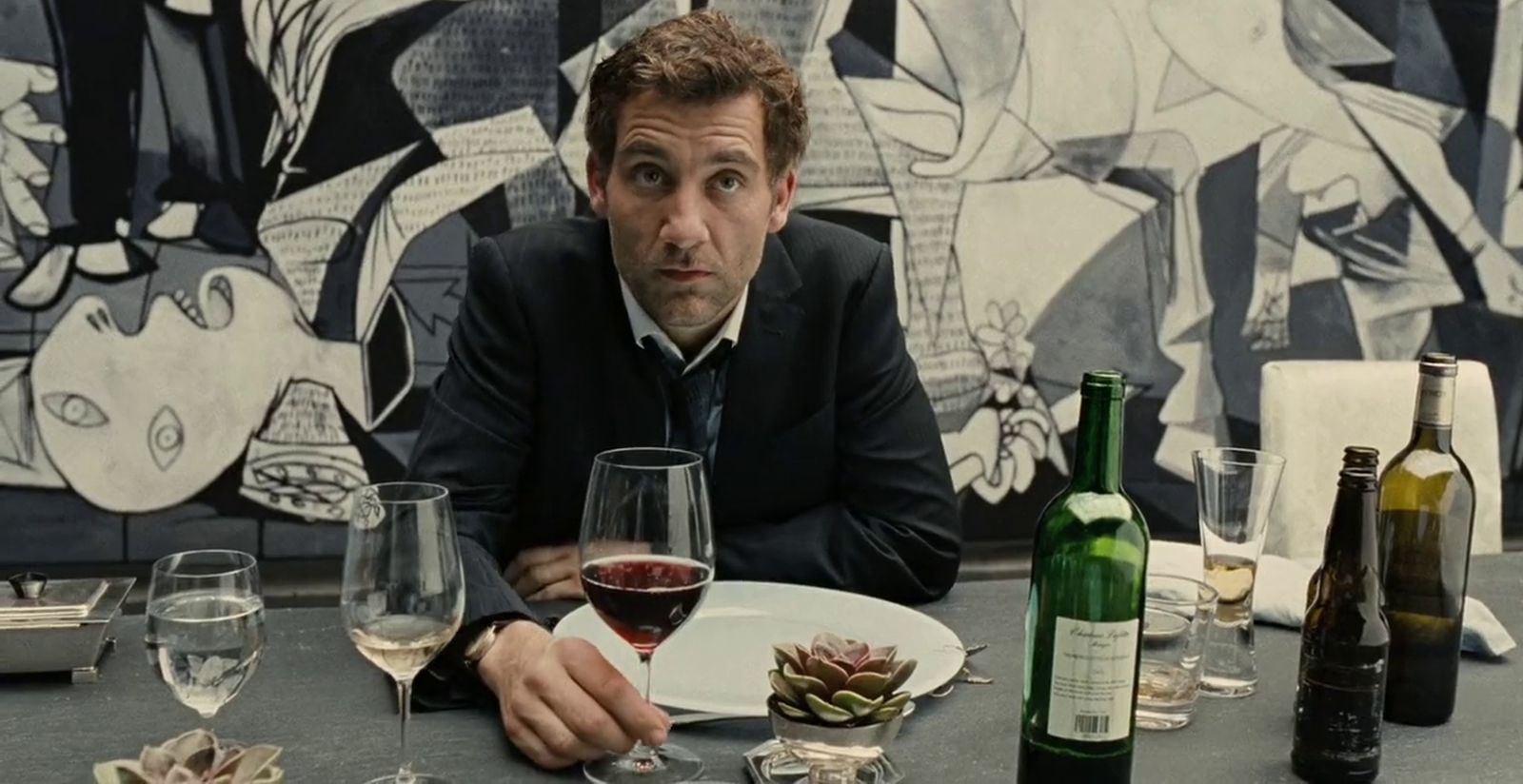
I'm a copywriter with a passion for film and screenwriting.…
The link between film and art is well-documented, especially how filmmakers are influenced and inspired by their favourite artists and paintings. One of the best and most famous examples is Stanley Kubrick’s Barry Lyndon, where many scenes imitate classical paintings from the 1700s.
There are plenty of contemporary examples too. From the dream scenes architecture in Inception, said to be inspired by M.C. Escher’s paintings, to Pacific Rim’s robots, with director Guillermo del Toro taking his cue from a painting called Colossus, thought to be by Goya.
But how about shots that are so beautiful, they could be paintings? Not so much an imitation of a great work, but a triumph of composition, colour, light and feeling? A moment captured on film that could, quite easily, induce the same effect if hung on a gallery wall?
Picture perfect moments
In choosing some of the scenes that, to me, could be paintings, it’s been interesting to see the link between art and cinematography. Some, though not all of my choices have won awards or been nominated for their cinematography, which reinforces the fact that film and art are inextricably intertwined, each reflecting and influencing the other.
Many could be described as ‘beautiful shots’, but I’ve tried to go beyond that, to choose moments that would be equally at home on canvas, writing not as an artist or expert, but simply as someone who loves both film and art.
Macbeth (2015)
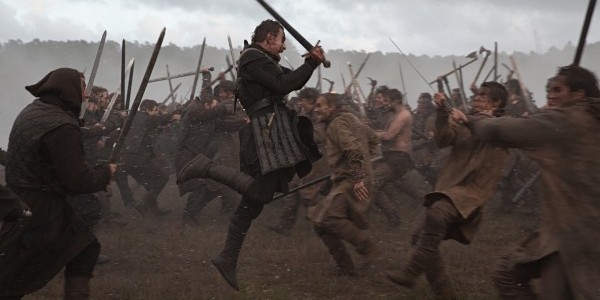
The whole of the battle scene in Justin Kurzel’s Macbeth is visually stunning, switching between beautiful long shots set in the breathtaking Scottish landscape, to close-ups showing the ferocity, violence and sheer terror of war.
Many shots from the scene would make incredible paintings, but I’ve picked this one for the immediacy of the action, drawing you in as men and swords clash, framed by the eerie, ethereal, foreboding Celtic mist. Why not watch the whole clip and choose the shot you think would make a great painting?
American Beauty (1999)
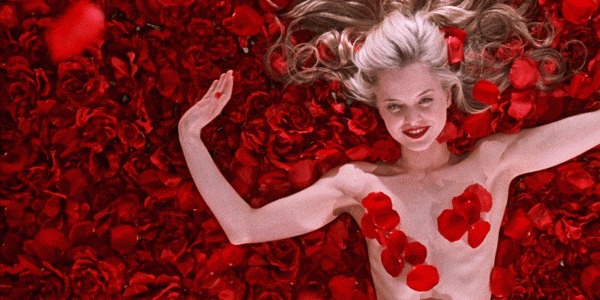
American Beauty’s iconic rose scene regularly features in top movie moment lists, but it’s also easy to see it as a painting. The composition is incredible, contrasting the depth, colour and texture of the falling rose petals, with the ivory smoothness of Angela’s skin, played by Mena Suvari.
Famed for its use of symbolism, American Beauty lends itself perfectly to art, using red roses to represent sexuality and life force in this visually stunning scene. It’s said that the film’s cinematographer, Conrad Hall, used tranquil compositions like this to contrast with the drama of the film’s narrative.
Children of Men (2006)
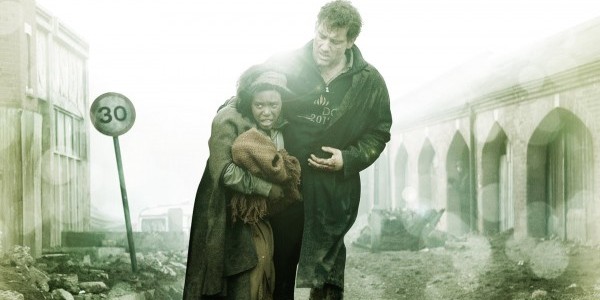
I wish this shot was a painting. It captures all the drama and emotion of Alfonso Cuaron’s science fiction thriller, Children of Men, etched on the faces of Clive Owen’s Theo and Kee, played by Clare-Hope Ashitey. The contrast between the decay and destruction of the muted landscape, versus the humanity of the characters is staggering, made even more poignant by the dirty, dishevelled way they look.
Alfonso Cuaron and his director of photography, Emmanuel Lubezki, famously used long shots throughout the film, to draw the audience into the world they’d created, and this shot definitely echoes that. Stunning.
A Matter of Life And Death (1946)
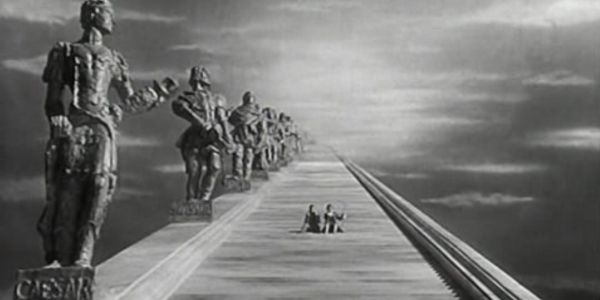
I think it’s easy to see A Matter of Life and Death’s moving stairway to heaven as a picture, with its surreal, ethereal feel. The escalator itself was created by engineers from London Transport, with the statues created by sculptor Eric Aumonier, who also designed several pieces for London Underground.
The film’s directors, Michael Powell and Emeric Pressburger, are famed for their no-holds-barred imaginations and this scene really captures that – strange, whimsical, fantastical and more than a little Dalí-esque.
The Grand Budapest Hotel (2014)
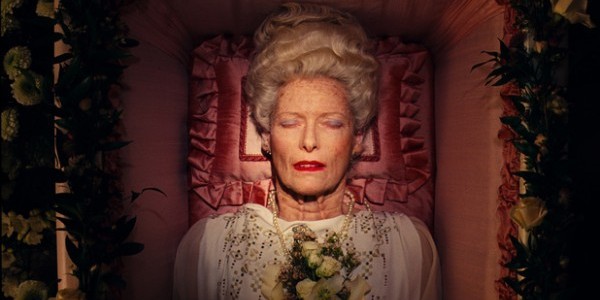
Wes Anderson’s The Grand Budapest Hotel was nominated for nine Oscars, including Best Cinematography. Not surprisingly, there are many shots that could be paintings, given the director’s love for elaborately composed scenes, crafted by cinematographer Robert Yeoman. I chose this one as a wonderful example of portraiture, showing Tilda Swinton as the late Madame D.
Apparently, Anderson is a big fan of shots with a perfectly centred focal point and I think that’s why this image stands out as a portrait, with the rich, illuminating light drawing your eye to Madame D’s face. As you’d expect with Anderson, every little detail has the deep, opulent quality of an oil painting, from the crimson red of Madame D’s lips, to the luxurious texture of her waved hair and the pillow behind her head.
Constantine (2005)
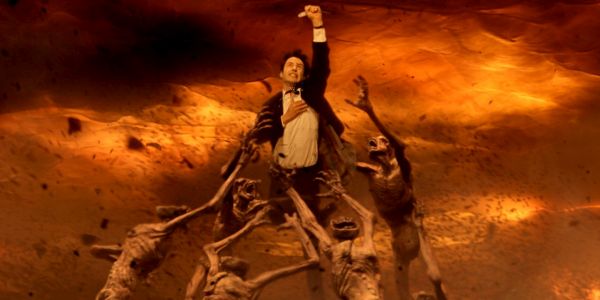
Art isn’t just about beauty of course. It’s been terrifying audiences for hundreds of years, delving into the depths of all we fear, conjuring nightmarish horror into reality in evermore visceral and frightening ways. The hell scene in Constantine is a brilliant example of that, throwing the title character, John Constantine, played by Keanu Reeves, into a bleak, contemporary hell filled with infinite flames, decay and demons. The inspiration for Constantine’s hell came from the rich imagination of the film’s director, Francis Lawrence, and overall visual effects supervisor, Mike Fink, as well as the visual effects studios involved.
Interestingly, they drew on many diverse influences, from the 16th century surrealist artist, Guiseppe Arcimboldo, to footage of nuclear blasts. This shot captures that, reminiscent of classical, biblical art in its symbolism and story-telling, as Constantine reaches heaven-ward to escape hell, pursued by maniacal demons, brought to life by rich colour and light.
Mad Max: Fury Road (2015)
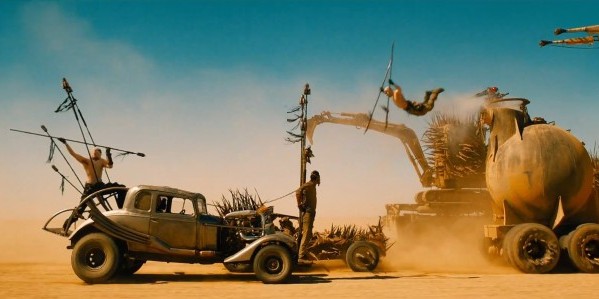
Sticking with the surreal and horrific, Mad Max: Fury Road, directed by George Miller, is another stunning example of nightmare-fuelled terror brought to life on screen. The film’s dark imagination is perfectly captured in this shot, pitting humanity against the heavy menace of war and machines. It has the inventiveness and absurdity of a painting by Salvador Dalí or Hieronymus Bosch, combined with the unsettling feel of an artist like Goya or Francis Bacon.
Wuthering Heights (2011)
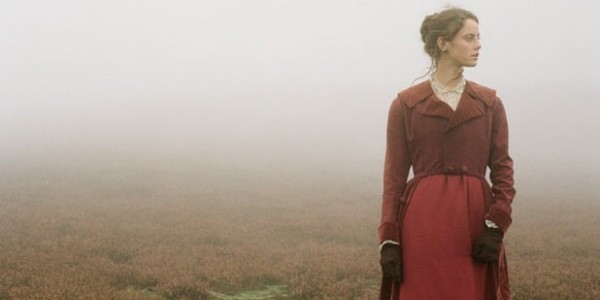
When I saw Wuthering Heights at the cinema, I was struck by how bleak the eponymous Yorkshire landscape looked, almost post-apocalyptic. It made the film brilliantly contemporary for a story based on a classic 19th century novel.
Apparently, the director, Andrea Arnold, wanted to strip the story back to its rawest state, and this shot reflects that perfectly: full of pain, anger, foreboding and regret. It’s the emotion that makes it like a painting, and the strength of Cathy’s pose, standing against the muted, mist-laden heather.
Drive (2011)
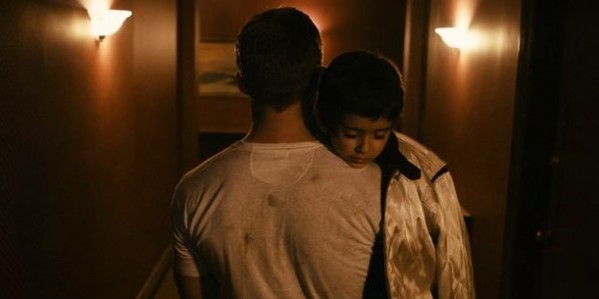
Think of Drive, directed by Nicolas Winding Refn, and it’s likely you’ll think of two scenes. The frenetic, edge-of-your-seat, opening getaway drive, or the chilling violence of the lift, where Driver, played by Ryan Gosling, stomps his assailant’s head to pulp. But this is my favourite scene, and one that could definitely be a painting.
It’s a beautiful study of contemporary masculinity, and in terms of the film, a seminal moment in revealing Driver’s true nature. The contrast between light and dark is a key theme in Drive and it’s shown to great effect here, as Driver carries Irene’s son Benicio home, after an afternoon of escapism by the river.
12 Years a Slave (2013)

Researching this article, I discovered that Sean Bobbitt, cinematographer on Steve McQueen’s 12 Years A Slave, was inspired by the simplicity of filmmaker Jim Jarmusch, especially his film Down by Law. I think that simplicity shows throughout the film and makes many shots worthy of being compared to paintings.
I love this shot for the burning defiance of Patsey’s eyes, played by Lupita Nyong’o, and the way her blue dress is like a beacon of hopeful colour against the bleak backdrop of slavery.
What film moments do you think are like paintings – for their composition, colour, lighting or simply, the way they make you feel?
(Editor’s note – top image: Clive Owen in Children of Men (2006), sitting in front of a very prominently placed copy of Picasso’s Guernica, which has great symbolic value in the film and returns multiple times – source: Universal Picture)
Does content like this matter to you?
Become a Member and support film journalism. Unlock access to all of Film Inquiry`s great articles. Join a community of like-minded readers who are passionate about cinema - get access to our private members Network, give back to independent filmmakers, and more.
I'm a copywriter with a passion for film and screenwriting. I love most film genres but especially thrillers, science fiction, movies based on classic literature and films that can't be pigeon-holed.












